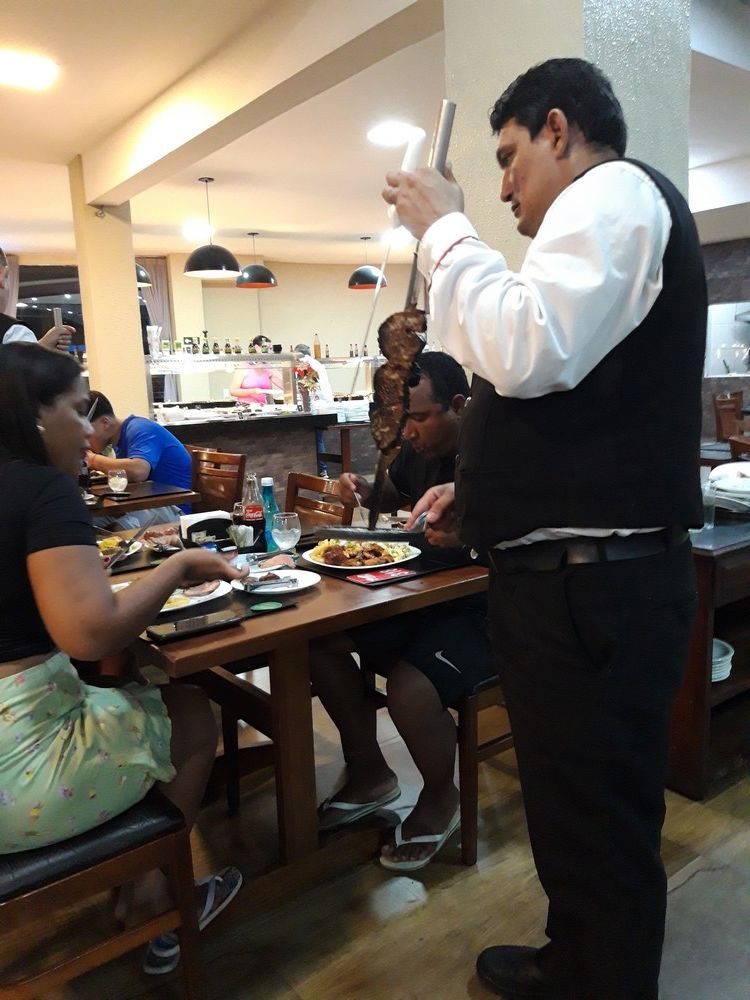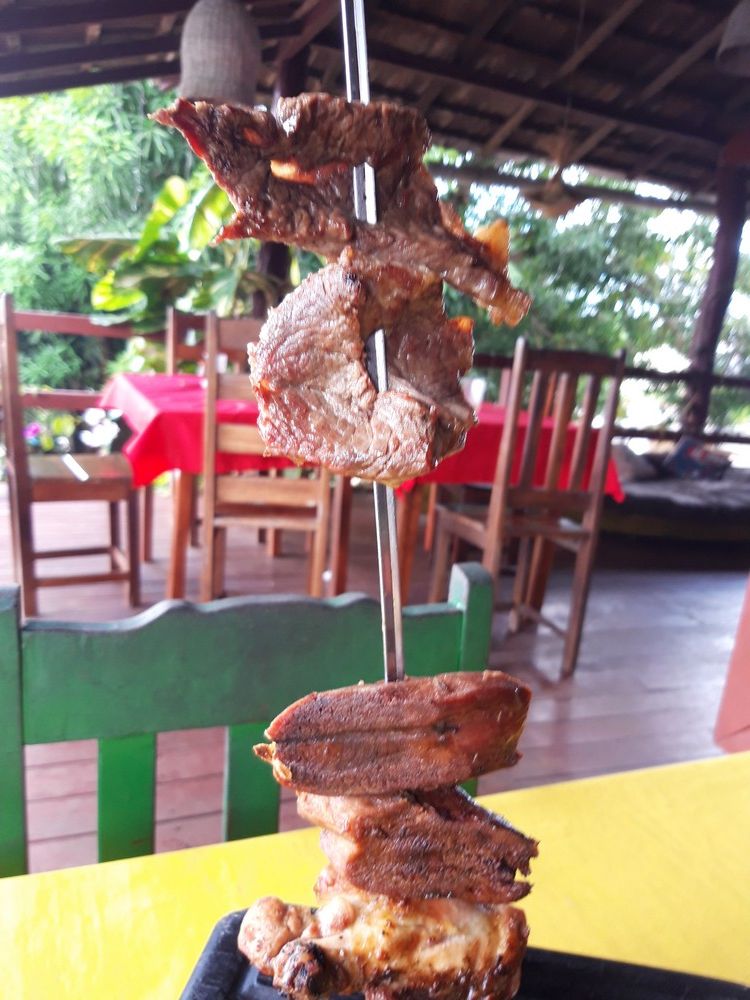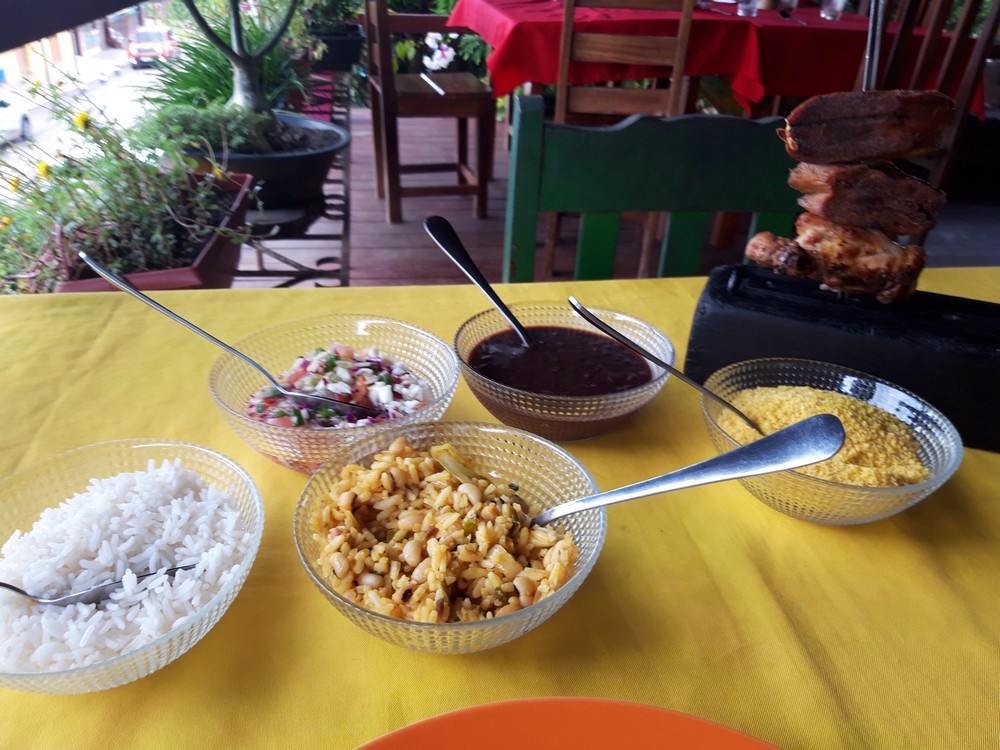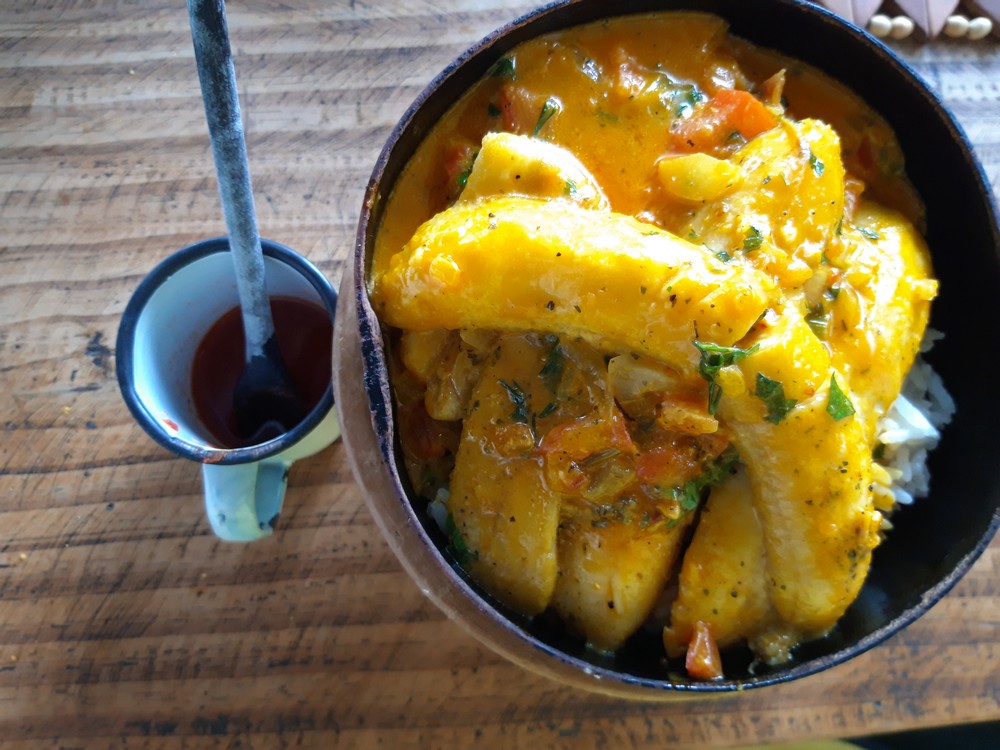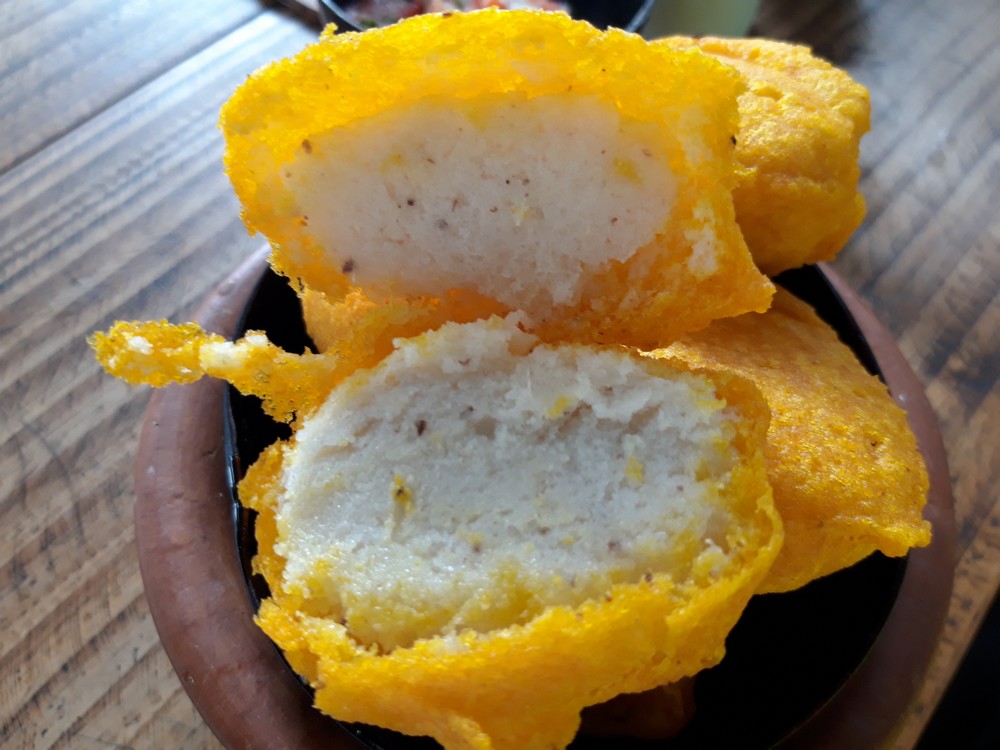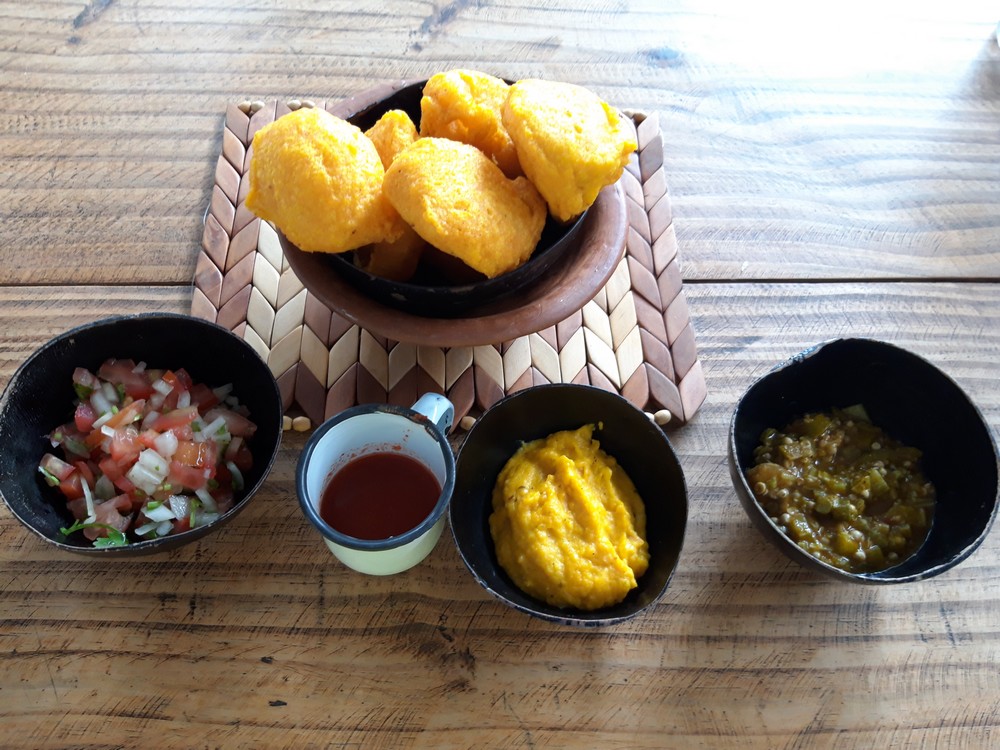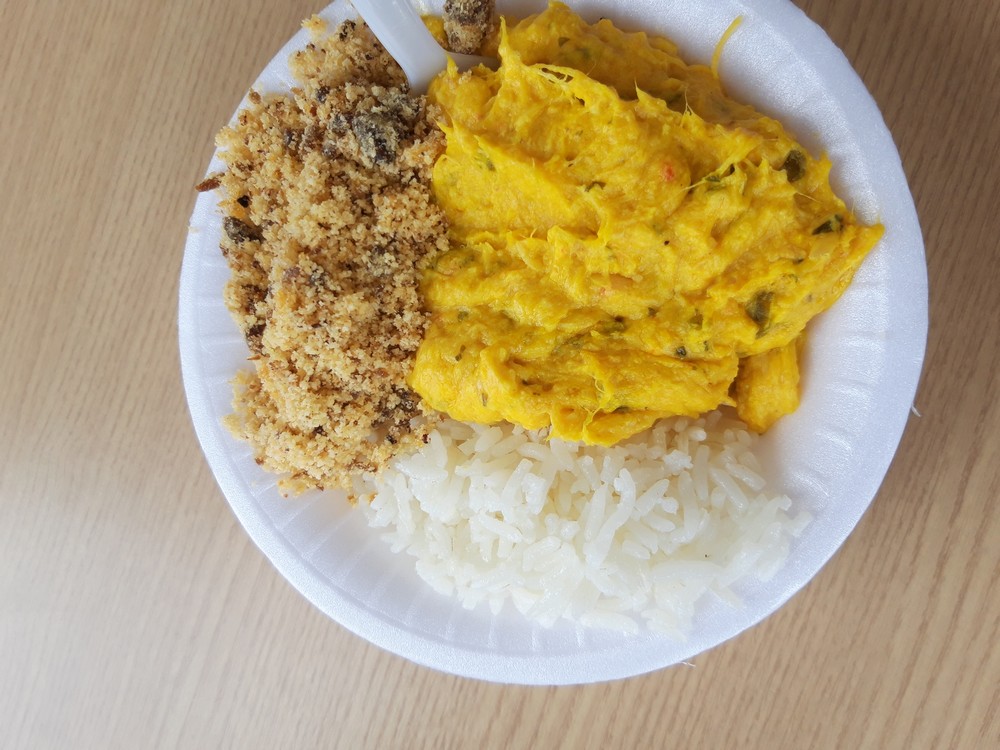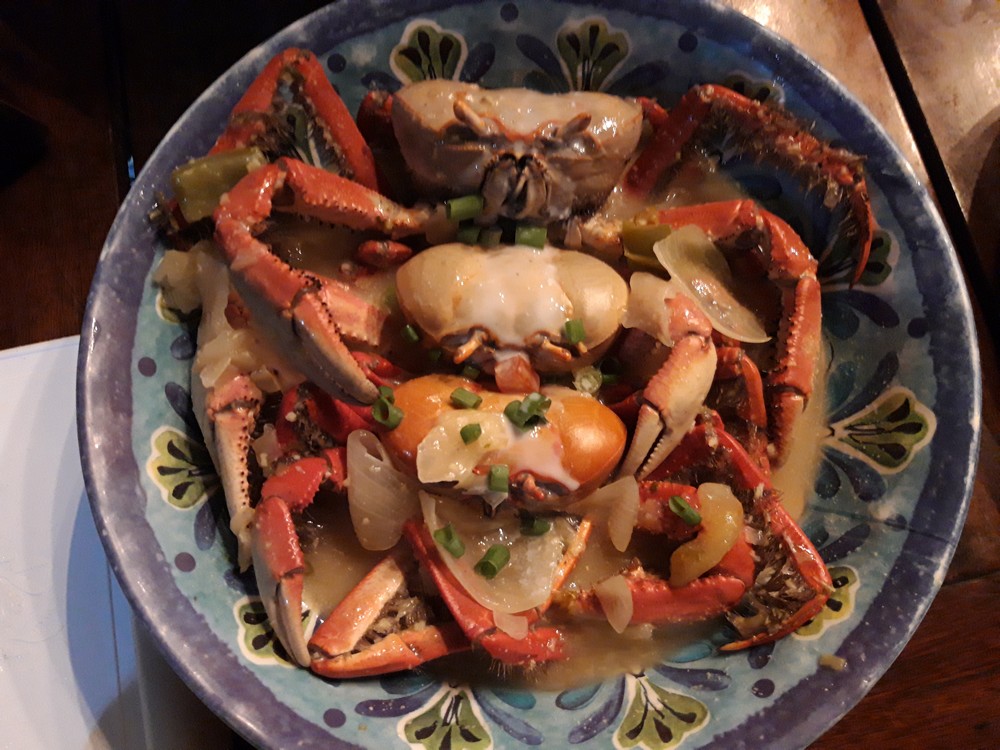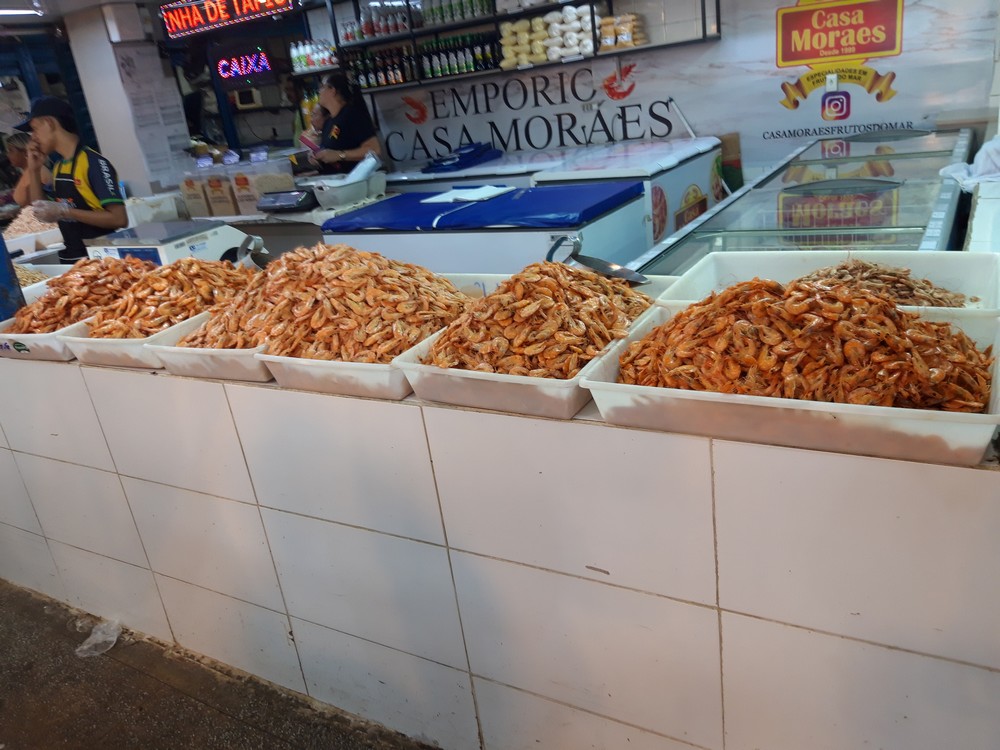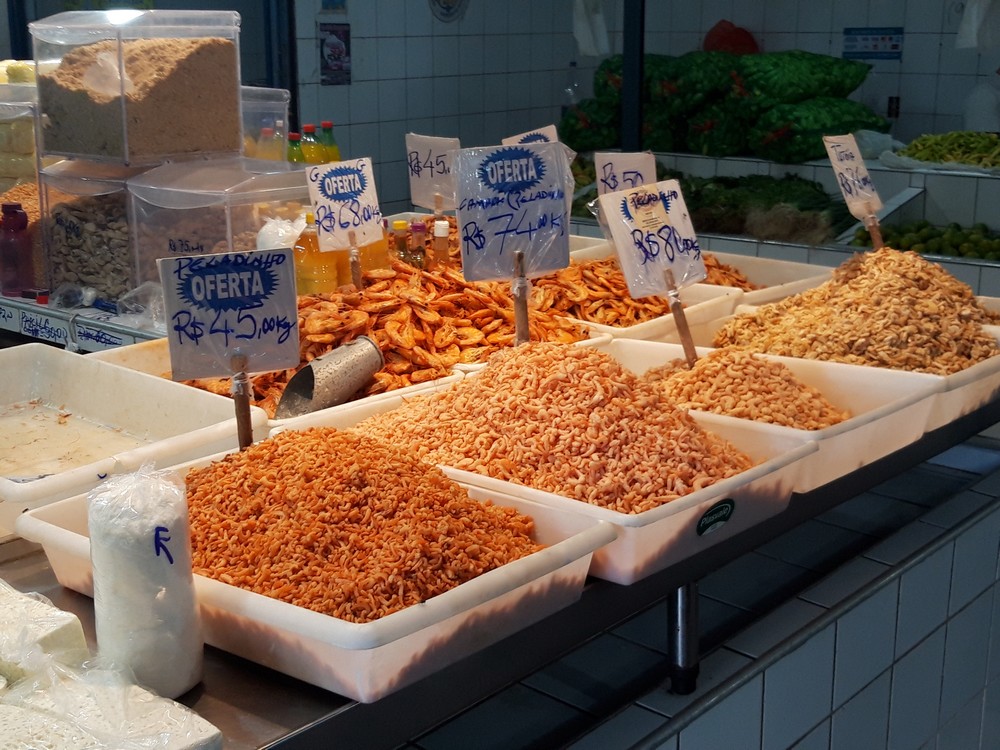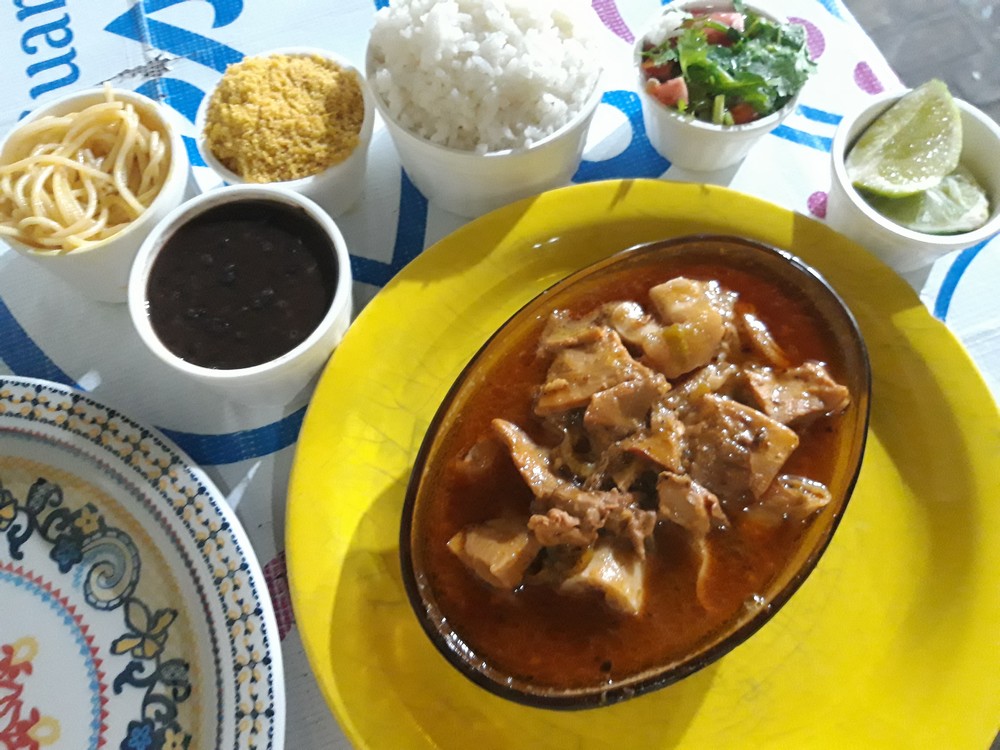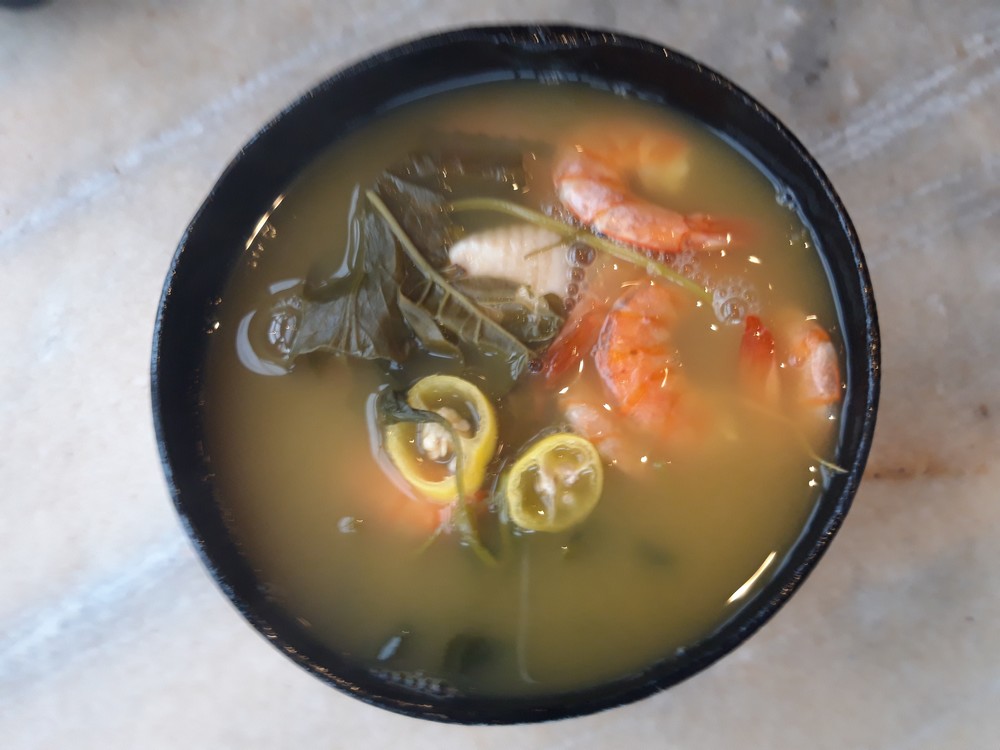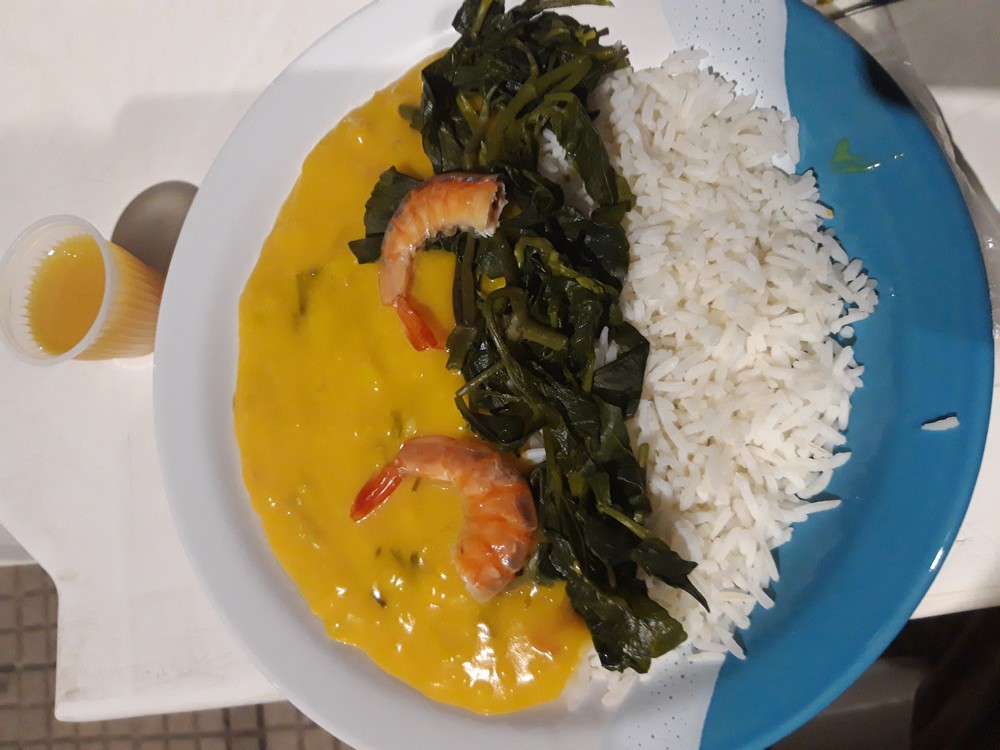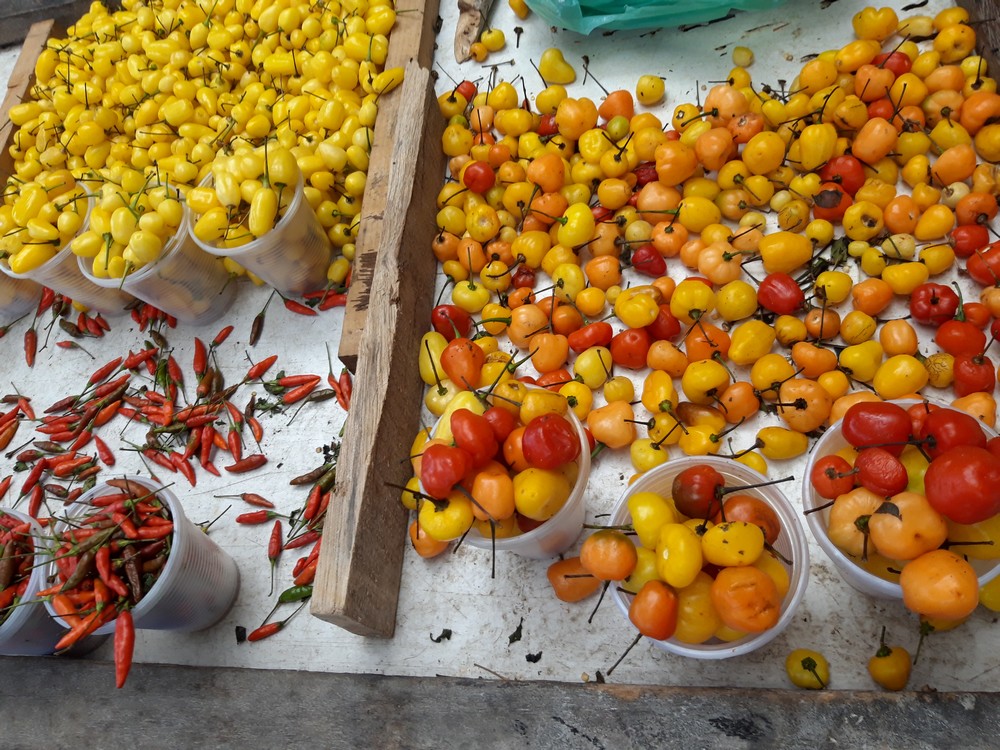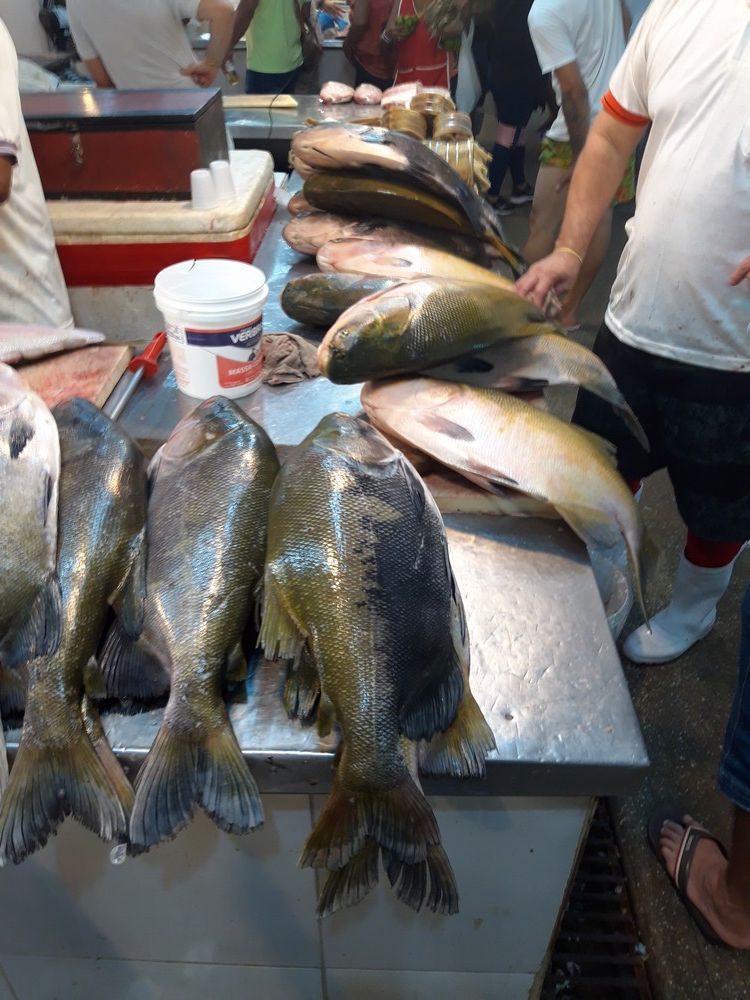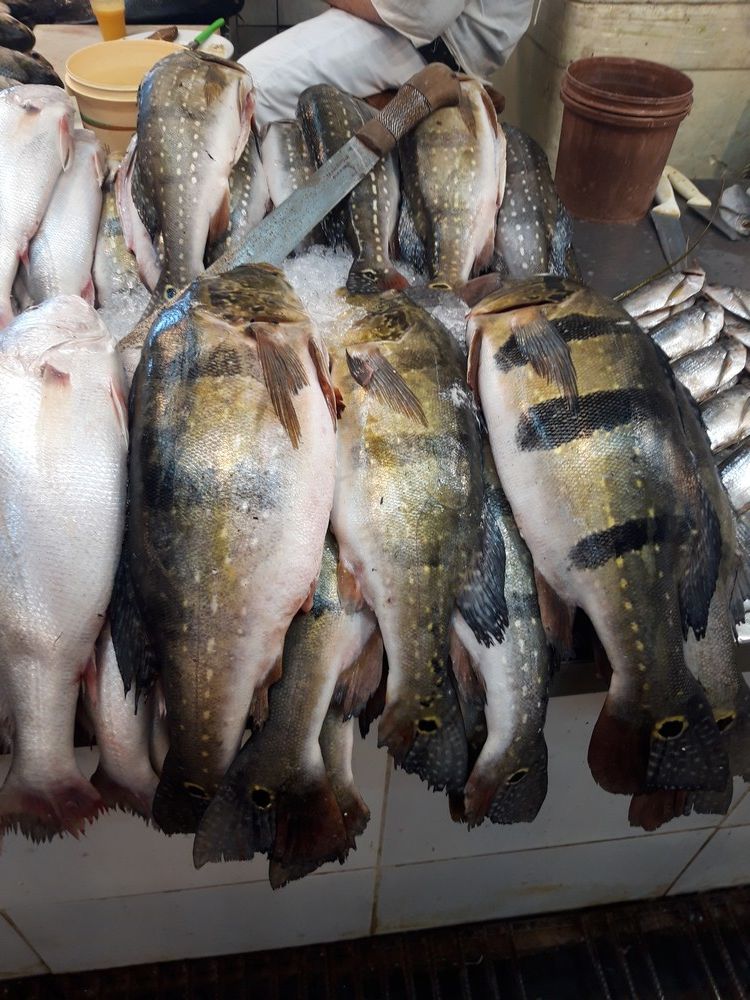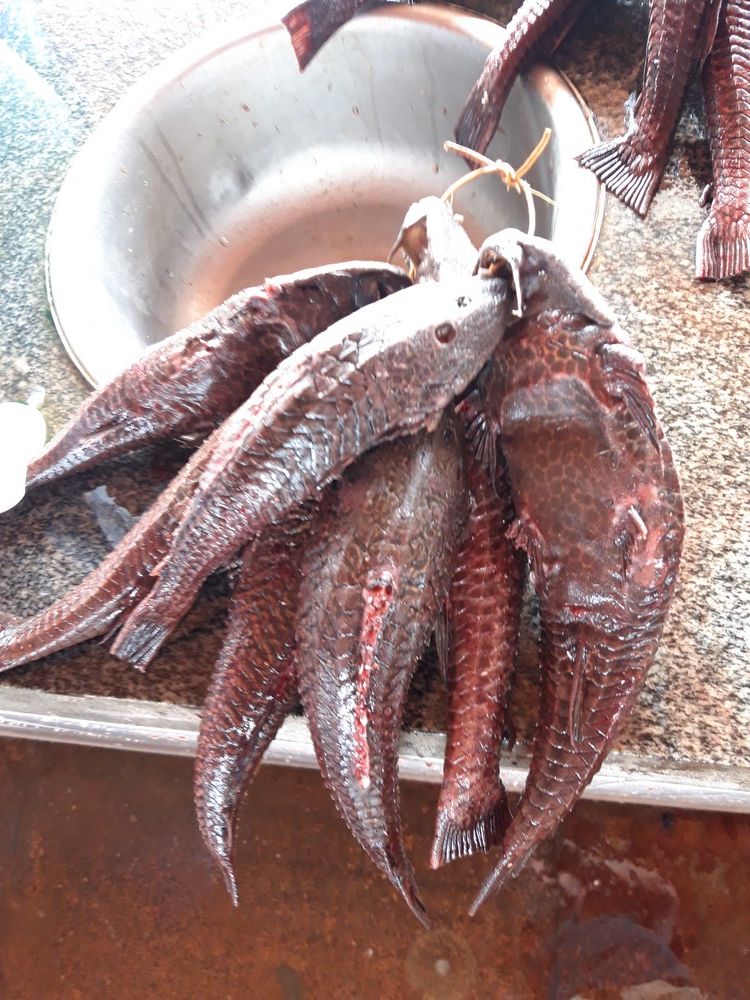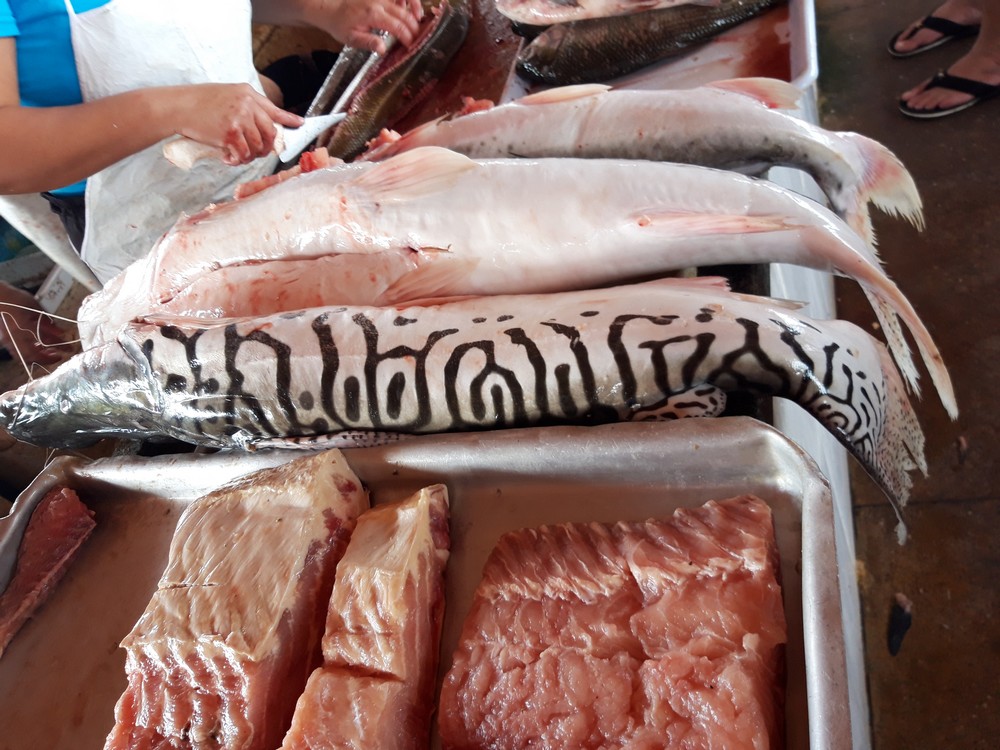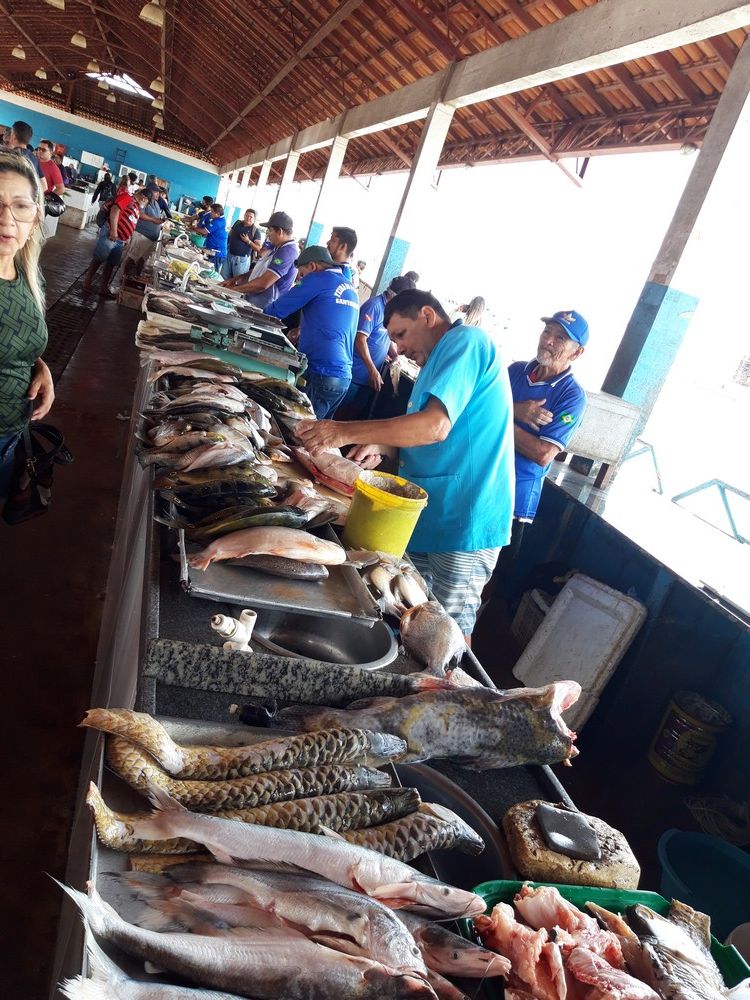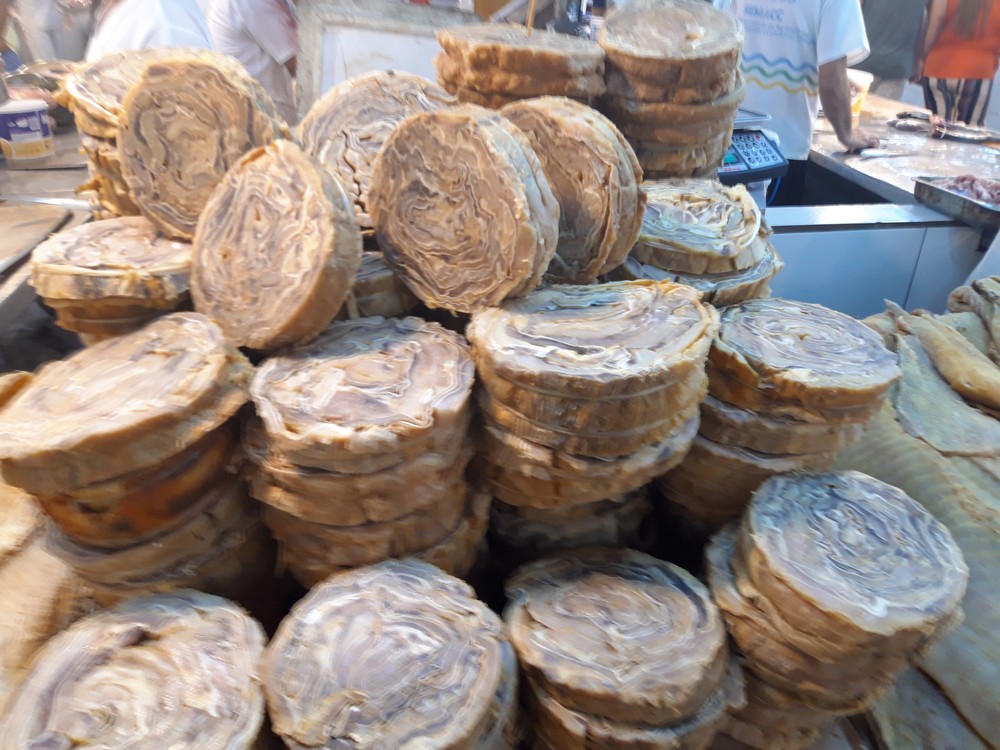Brazil is a federation, so the inhabitants tend to be very proud of their belonging to one state or another. They identify with a certain culture and a certain way of life, which can be very different from state to state, especially when they are very far away. Which is natural, if we think that Brazil is a country big as a continent: Canada is closer to the north of Brazil than the south of Brazil is to its north; respectively the western extremity of Brazil is nearer to Africa than it is to its eastern extremity. Brazilian states affirm and promote their gastronomic heritage and boast about it.
The south is dominated by churrascarias: beef grills of Argentinian-Uruguayan influence, as there are enormous cattle farms, over a vast territory, populated by gaúchos (the cowboys of South America). Huge restaurants with dozens of types of beef, from sausages to offal; and from sirloin to ribeye, served on skewers and cut directly at the table. Some better matured, some less matured, some tenderer, some tougher - beef steak is the culinary quintessence of the southern states of Brazil.
Also, European-inspired breads, as well as pastries and cheeses (made in Brazil, of course) are frequently eaten in the south, which means a cuisine with strong European influences. One of the symbols of the Brazilian south is pão de queijo - balls of cassava flour dough, with cheese and yogurt, crispy on the outside and fluffy on the inside.
In recent decades, Brazil also produces (high quality) wine in the southern states. And even olive oil. The areas cultivated with olive trees are significantly smaller, as olive trees do not like tropical climate (nor does vine, actually), so only in the southern states are there favourable conditions for its culture, where the climate is subtropical, similar to the Mediterranean one. So, Brazil is a very small producer of olive oil, but those few producers have invested a lot in quality, and Brazilian olive oils are constantly awarded at international competitions.
Things are quite different on the coast, from Rio upwards, in the territories Brazilians call Nordeste. Nordestinhos (dwellers of the coast) are the descendants of African slaves, so the cuisine here is directly influenced by tropical Africa. It's impossible not to come across a moqueca, the most common food in Bahía and Espírito Santo, which is a stew that comes in various versions: mostly with shrimp or fish; sometimes with chicken or vegetarian (with bananas or plantains). Vatapá is also widespread all along the north-eastern coast, as far as Maranhão and Pará, with chicken and shrimp versions, prepared with a sauce thickened with flour. On the other hand, the street cuisine is dominated by acarajé - donuts made of fried bean paste, which is then split open and filled with various ingredients and sauces. Acarajé is a sort of a falafel, with the difference that chickpeas are replaced with beans to make the paste which is then fried.
The key ingredient of Afro-Brazilian cuisine is the dendê oil (red palm oil), which gives the food its reddish-yellow colour. The bread is replaced with rice and/or feijoada - a black bean stew, with or without salsicha (sausage). So, if you end up in this part of coastal Brazil, you'd better say goodbye to bread for a while. You can find it only in exceptional cases, perhaps flung on a breakfast table, in the form of small buns. Instead, you should be ready for loads of rice and feijoada.
Vegetables are also quite different from what we find in Europe. Okra is cooked fairly basically - boiled, in soups or in various combinations of other vegetables, seasoned with vinegar. Maxixe belongs to the Cucurbitaceae family, of African origin. It is like a small, spiky ball, with the taste and texture of a squash. Jiló belongs to the Solanaceae family, also of African origin. It has an eggplant texture and a bitterish taste. You can find them both boiled, as a side or a main dish, alongside the ubiquitous black beans, rice and farofa (cassava or corn flour, fried in dendê oil, with or without small pieces of dried meat).
Nordestinha cuisine uses shrimp plentifully. In the markets you can find dozens of varieties: fresh or dry; large, small or very small; smoked or not. In Maranhão it is hard to find any dish without shrimps, from the bitter-tasting arroz de cuxá (rice with small, dried shrimps and vinagreira - the leaves of a plant); to the delicious torta maranhense (dried shrimp tart).
And in Fortaleza, Ceará, one of the local specialties is crab (caranguejos). They are usually boiled when served, with some stewed vegetables, and you can find them in quite a few restaurants. However, they are a pain to eat, and if you don't handle them carefully, their pincers can turn into white weapons, endangering the lives of your table neighbours.
The north-eastern coast of Brazil is a vegetarians' paradise, but don't imagine that Afro-Brazilians don't eat meat at all. A dish that few would have the guts to try is prepared of beef legs (the gelatinous part), sometimes with pieces of tripe. With some vegetables and lots of sauce. It is called mocotó and is of Portuguese origin. It is eaten (how else?) with rice, feijoada or farofa.
The further north you go and the closer you get to the Amazon, the more you can feel the indigenous influence, especially when it comes to ingredients. One such ingredient is a plant from which both the leaves and flowers are used: the jambú. Imagine you start eating and suddenly you can't feel your lips anymore. This is exactly the effect of the jambú on the consumer, one of the strangest effects a food can have on you. This is due to a compound called Spilanthol, found in the jambú plant. Don't panic, your lips will gradually recover and then you'll want some more jambú leaves, if only to stop suffering from the spiciness of cumari do Pará, one of the most fragrant (and hot) chili peppers you've ever tried. You can't go to Pará and Amazonas and not try the tacacá soup, made of jambú leaves, dried shrimps and tucupí (a cassava yellow stew); or pato no tucupí, a duck meat dish with tucupí sauce and jambú leaves or flowers. And marvel at the numb lips!
Obviously, when you say the Amazonia, you mean fish. The markets are full of dozens of fish species, each one stranger than the other. But don't imagine you can eat a piranha at every meal. That is more of a legend, and if you don't get there during the piranha fishing season, you have little chance of finding it anywhere. Maybe just alive, in the Amazon river, but you don't really want to come nose-to-nose and tooth-to-tooth with it! There are however so many other fishes that you can (theoretically) try, that you do not need to regret the absence of piranha on your table. Pirarucu is one of the emblematic fishes of the Amazon basin and one of the largest freshwater fish species in the world. You can find it in the fish markets and restaurants, fresh or in the form of dried pastrami (which looks like big rolls, huge cylinders) and it tastes great. Tambaqui is another very popular fish in Amazonia, and you cannot go to Belém, Santarém or Manaus without trying it at least once. It is extremely unpleasant however, that the fish markets might be full of fish, while it is rather scarce on the restaurant menus. Apart from two or three species, there is no public place where one can try the abundance of Amazonian fish, and the fisheries near the markets are depressingly closed. When it comes to fruit, you can buy them at the market and eat them at your guesthouse, but in the case of fish you have no such choice, because you have to cook it. So, just imagine the smell spreading around the whole neighbourhood!
Surprisingly enough, you can also find the famous bacalhau everywhere: the dried and salted cod that the Portuguese love so much. Why would Brazilians need bacalhau, given the abundance of local fish? Well, the Portuguese heritage is deeply rooted in Brazil.
How could I write on the Brazilian cuisine without mentioning coffee? Well, Brazil is the largest producer and exporter of coffee in the world. If for a long time, Brazil produced coffee rather in terms of quantity than quality, in recent decades Brazilian coffees have begun to compete with Colombian and even Ethiopian ones. In the big cities you can find coffee of origin, freshly roasted, it is obvious we can speak about the spreading of the quality awareness.
***
Each of us has his/her own representation of paradise. I was often thinking that my paradise would look like a bucolic village perched on a hill, on the Turkish coast of the Mediterranean, surrounded by olive and pomegranate groves, with herds of goats grazing all around. With the streets smelling of boiled goat's milk.
In Rajasthan however, I discovered that paradise could look different. Or at least the smell associated with it. Red stone streets of a bazaar in an old Mughal town, smelling like cakes fully bathed in honey & melted ghee. Obviously, as we are in India, the smell of honey & melted ghee is supposed to blend with that of stray cows' dung. Which is natural for an Indian paradisiacal image, given the cow's sacred character to the Hindus.
But let's see what you can find in Brazil.
Brazil's coastal region does not excel in desserts, let alone pastries. When speaking about dessert here, one means mainly açaí ice cream. However, one of Brazil's prides is a cake from the state of Pernambuco, called bolo de rolo. It really supplants this scarcity and is worth a thousand desserts. It's a sort of Swiss roll, but with a much finer dough, prepared with a lot of butter. Filled with goiabada.
The Portuguese used to be (and still are) big lovers of marmalade, which was traditionally made of quince (hence the name, as in Portuguese quince = marmelo). Since they couldn't find quinces in Brazil, they looked for a substitute to make their marmalade. Thus, they found guava, which can successfully replace the quince to prepare a thick paste you can cut with the knife, i.e. the texture of marmalade.
Goiabada (guava marmalade) has spread throughout Brazil. It can be thick, soft, with or without fruit chunks inside. It is used in countless desserts, it can be eaten with fresh served cheese (Romeu e Julieta). It is so good, you just want to eat it as such, directly from the jar, and never get enough, you wish the jar was bottomless!
Well, since goiabada is so wonderfully good, imagine what bolo de rolo is like! It is just another dimension of paradise. Well, yes, I guess this is what Brazilian paradise looks like: diaphanous white-burgundy bolo de rolo clouds, undulating in endless waves. Bolo de rolo as far as the eye can see, in layers of fluffy dough, with lots of butter, filled with divine, heavenly goibada. Floating on clouds of bolo de rolo - well, this is paradise! What other dessert could you want, what other tastes could you ask for, what could you desire more from Brazil?
So, in Pernambuco I was about to discover a different image of paradise. That was when I realized it is, in fact, made up of a multitude of facets. It just depends from which angle you look at it.
GLOSSARY OF SCIENTIFIC TERMS
Açaí: Euterpe oleracea
Cumari do Pará: Capsicum chinense
Dendê: Elaeis guineensis
Maxixe: Cucumis anguria
Jiló: Solanum aethiopicum
Jambú: Acmella oleracea
Pirarucu: Arapaima gigas
Tambaqui: Colossoma macropomum
Vinagreira: Hibiscus sabdarrifa
(Acknowledgments to Iulia Sîrboiu for revising the English version.)
